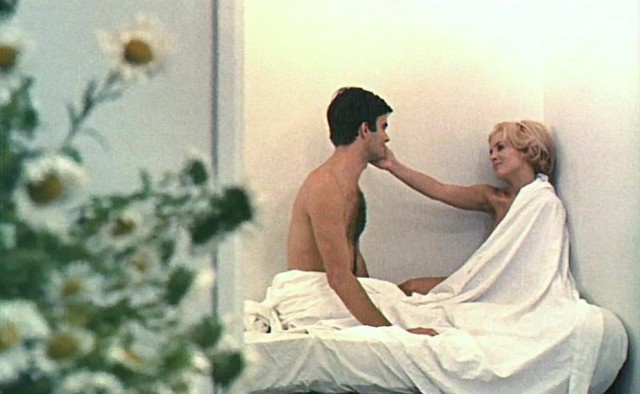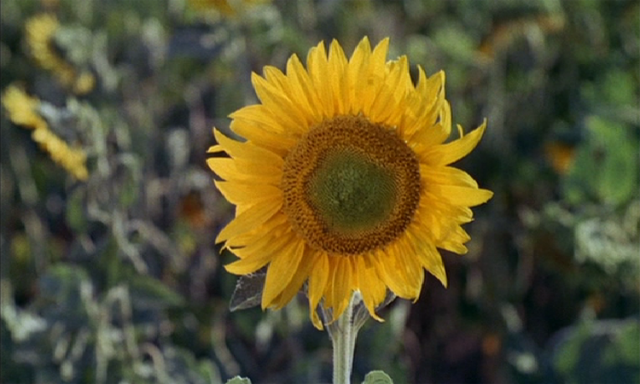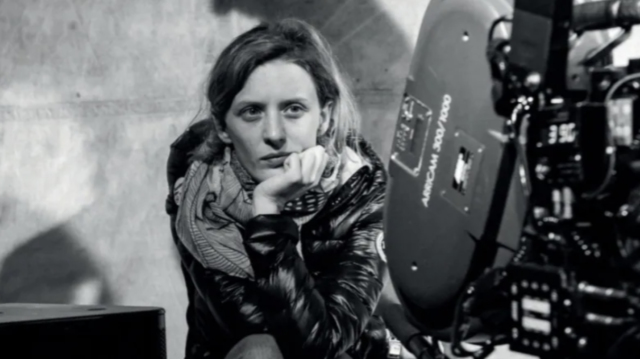
Mia Hansen-Løve is curating an inspirational series at Metrograph (photo by Judicaël Perrin)
MIA HANSEN-LØVE SELECTS
Metrograph
7 Ludlow St. between Canal & Hester Sts.
November 5-13
212-660-0312
nyc.metrograph.com
“Filmmaking is a perpetual questioning of existence. What is beauty? Why am I living? And I need that, I think, perhaps because of being the daughter of two philosophy teachers,” French writer-director Mia Hansen-Løve told the Guardian in 2016. A critics darling and regular award winner for her intimate tales of family drama and romantic love (Goodbye First Love, The Father of My Children, Things to Come), often with semiautobiographical elements involving her DJ brother, her philosophy professor parents, and her long relationship with former husband Olivier Assayas, she is ready to make a big jump with her latest film and first in English, Bergman Island, in which a pair of filmmakers (Vicky Krieps and Tim Roth) seek inspiration on Fårö Island, where Ingmar Bergman lived and made some of his finest films.
In conjunction with the film’s release, she is curating a program at Metrograph, “Mia Hansen-Løve Selects,” running November 5-13, consisting of six films that had an impact on her, in addition to her debut. Earlier this year, for a similar series at BAMPFA in California, she chose Jean Eustache’s The Mother and the Whore, Hou Hsiao-hsien’s Café Lumière, Gérard Blain’s The Pelican, Bo Widerberg’s Adalen 31, and Éric Rohmer’s Summer. Her Metrograph lineup is similarly diverse: Bergman actor Victor Sjöström’s 1928 silent classic, The Wind; indie favorite Kelly Reichardt’s Wendy and Lucy, in which Michelle Williams portrays a homeless woman on the move with her dog; Rohmer’s A Tale of Winter, about a single mother searching for companionship; Agnès Varda’s Le Bonheur, a unique take on happiness; Edward Yang’s epic four-hour A Brighter Summer Day, about teen angst in Taiwan; and Hou’s dizzying, swirling Millennium Mambo, starring a resplendent performance by Shu Qi. The series is anchored by Hansen-Løve’s 2007 debut feature, All Is Forgiven, being shown November 5-18 (and available on demand), about a family in crisis because of drug addiction. Below are select reviews.
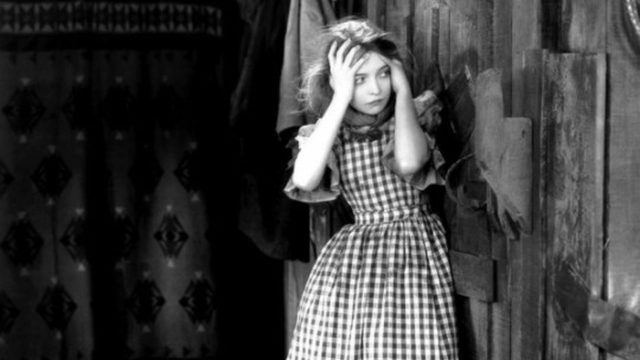
Letty Mason (Lillian Gish) is being driven crazy by internal and external sources in The Wind
THE WIND (Victor Sjöström, 1928)
Metrograph
Friday, November 5, and Sunday, November 7, noon
nyc.metrograph.com
Victor Sjöström’s 1928 now-classic silent film The Wind stars Lillian Gish as Letty Mason, a young woman moving from Virginia to Texas to live with her cousin Beverly (Edward Earle). Traveling from the cultured, civilized East to what was still the wild West, the uncertain Letty must confront the fierceness of nature head-on — both human nature and the harsh natural environment. On the train, she is wooed by cattleman Wirt Roddy (Montagu Love), but her fears grow as she first sees the vicious wind howling outside the train window the closer she gets to her destination. Once in Sweetwater, she is picked up by her cousin’s neighbors, the handsome Lige Hightower (Lars Hanson) and his goofy sidekick, Sourdough (William Orlamond). Both men take a quick liking to Letty, who seems most attracted to Wirt. Soon Beverly’s wife, Cora (Dorothy Cumming, in her next-to-last film before retiring), becomes jealous of Letty’s closeness with her husband and kids and kicks her out, leaving a desperate Letty to make choices she might not be ready for as the wind outside becomes fiercer and ever-more dangerous.
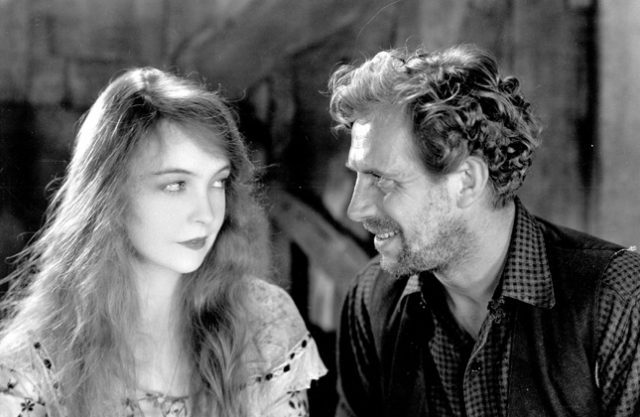
Letty Mason (Lillian Gish) and Lige Hightower (Lars Hanson) have some tough decisions to make in Victor Sjöström’s silent classic
The Wind is a tour de force for Gish in her last silent movie, not only because of her emotionally gripping portrayal of Letty, but because she put the entire production together, obtaining the rights to the novel by Dorothy Scarborough, hiring the Swedish director and star Hanson, and arguing over the ending with the producers and Irving Thalberg. (Unfortunately, she lost on that account, just about the only thing that did not go the way she wanted.)
Sjöström (The Phantom Carriage, The Divine Woman), who played Professor Isak Borg in Ingmar Bergman’s Wild Strawberries, and cinematographer John Arnold create some dazzling effects as a twister threatens and Letty battles both inside and outside; she is regularly shot from the side, at the door of the shack where she lives, not knowing if she’d be safer inside or outside as the wind and sand blast over her. The film, an early look at climate change, was shot in the Mojave Desert in difficult circumstances; to get the wind to swirl, the crew used propellers from eight airplanes. Dialogue is sparse, and the story is told primarily in taut visuals.
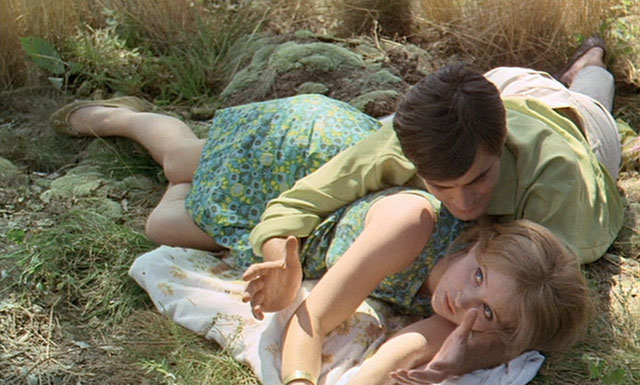
François (Jean-Claude Drouot) tries to convince Thérèse (Claire Drouot, his real-life wife), that he has plenty of happiness to spread around in Le Bonheur
LE BONHEUR (HAPPINESS) (Agnès Varda, 1965)
Metrograph
Friday, November 5, and Monday, November 8, 6:45
nyc.metrograph.com
In 1965, French Nouvelle Vague auteur Agnès Varda said about her third film, Le Bonheur, which translates as Happiness: “Happiness is mistaken sadness, and the film will be subversive in its great sweetness. It will be a beautiful summer fruit with a worm inside. Happiness adds up; torment does too.” That is all true more than fifty years later, as the film still invites divided reaction from critics. “Miss Varda’s dissection of amour, as French as any of Collette’s works, is strikingly adult and unembarrassed in its depiction of the variety of love, but it is as illogical as a child’s dream,” A. H. Weiler wrote in the New York Times in May 1966. “Her ‘Happiness,’ a seeming idyll sheathed in irony, is obvious and tender, irresponsible and shocking and continuously provocative.” All these decades later, the brief eighty-minute film is all that and more, save for the claim that it is illogical. In a patriarchal society, it actually makes perfect, though infuriating, sense.
French television star Jean-Claude Drouot (Thierry La Fronde) stars as the handsome François, who is leading an idyllic life with his beautiful wife, Thérèse (Claire Drouot), and their delightful kids, Pierrot (Olivier Drouot) and Gisou (Sandrine Drouot), in the small, tight-knit Parisian suburb of Fontenay. While away on a job, François meets the beautiful Émilie (Marie-France Boyer), a postal clerk who connects him to his wife via long-distance telephone, flirting with him although she knows he is happily married. And despite being happily married, François returns the flirtation, offering to help with her shelves when she moves into an apartment in Fontenay. Both François and Émilie believe that there is more than enough happiness to go around for everyone, without any complications. “Be happy too, don’t worry,” Émilie tells him. “I’m free, happy, and you’re not the first,” to which he soon adds, “Such happiness!” And it turns out that even tragedy won’t put a stop to the happiness, in a plot point that angered, disappointed, confused, and upset many critics as well as the audience but is key to Varda’s modern-day fairy tale.
Le Bonheur is Varda’s first film in color, and she seems to have been heavily influenced by her husband, Jacques Demy (The Umbrellas of Cherbourg), bathing the film in stunning hues that mimic Impressionist paintings, particularly the work of Pierre-Auguste Renoir, in a series of picnics and flower-filled vases. In a sly nod, at one point a black-and-white television is playing the 1959 film Le Déjeuner Sur L’herbe (“Picnic on the Grass”), which was directed by Jean Renoir, one of Auguste’s sons, and also deals with sex, passion, procreation, and nature. Le Bonheur also features numerous scenes that dissolve out in singular blocks of color that take over the entire screen. Cinematographers Claude Beausoleil and Jean Rabier shoot the film as if it takes place in a candy-colored Garden of Eden, all set to the music of Mozart, performed by Jean-Michel Defaye. Varda doesn’t allow any detail to get away from her; even the protagonists’ jobs are critical to the story: François is a carpenter who helps builds new lives for people; Thérèse is a seamstress who is in the midst of making a wedding gown; and Émilie works in the post office, an intermediary for keeping people together. As a final touch, François, who represents aspects of France as a nation under Charles de Gaulle, and his family are played by the actual Drouot clan: Jean-Claude and Claire are married in real life (and still are husband and wife after more than fifty years), and Olivier and Sandrine are their actual children, so Le Bonheur ends up being a family affair in more ways than one.
